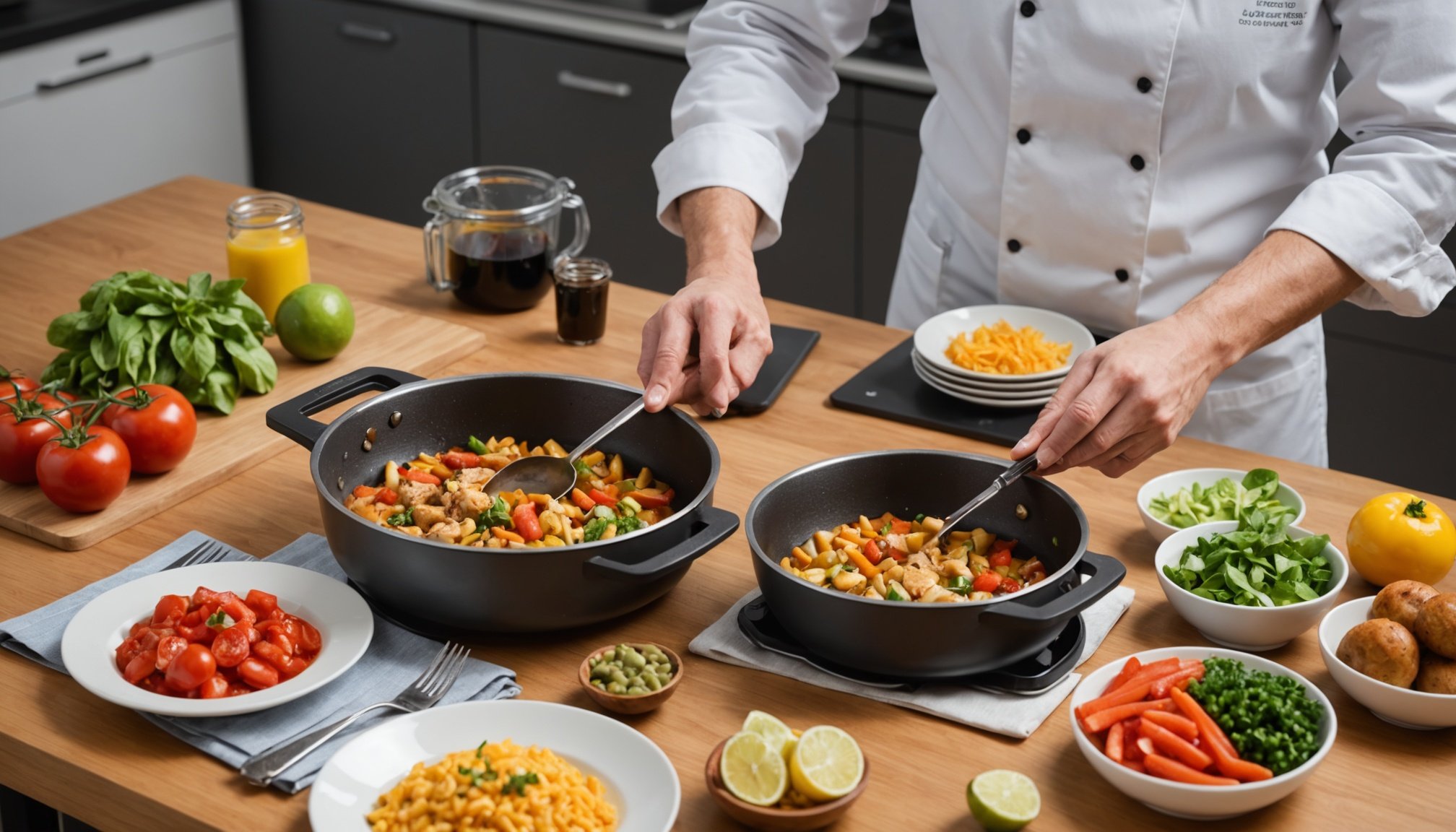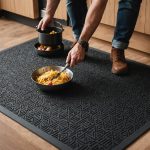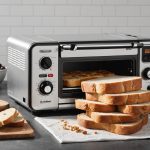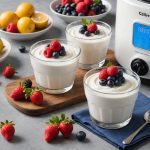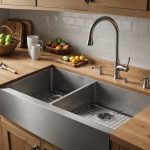Designing a kitchen tailored for effortless diabetic meal preparation can significantly enhance your cooking experience. Prioritizing functionality and accessibility, certain essential features streamline the process, making healthy meal prep less daunting. From adjustable countertops to intuitive storage solutions, these design elements empower those managing diabetes to create nutritious dishes with ease. Discover how a thoughtfully designed kitchen can transform your culinary journey and support your health objectives. Embrace these features to elevate not only meal preparation but also your overall well-being.
Essential Kitchen Design Features
Creating a kitchen that supports diabetic meal preparation requires thoughtful consideration of several design features. These features not only enhance cooking efficiency but also ensure the space is comfortable and accessible for all users.
Have you seen this : Discover the Best Ergonomic Bar Stools for Active Sitting and Improved Digestion in Your Kitchen
Consider these essential elements:
-
Layout and Flow: A well-planned kitchen layout is crucial. It should facilitate smooth movement between key areas, such as the refrigerator, stove, and sink. This efficient flow minimizes unnecessary steps, which is particularly beneficial for managing blood sugar levels through timely meal preparation.
Topic to read : Discover the Ideal Blue Hue for Your Kitchen: Colors That Curb Appetite and Support Weight Loss
-
Ergonomic Considerations: Comfort and accessibility are paramount. Adjustable countertops and easy-to-reach storage can significantly enhance the cooking experience. These features support individuals with varying needs, making meal preparation less strenuous and more enjoyable.
-
Lighting and Visibility: Adequate lighting is essential for precision in cooking and reading labels. Consider layered lighting options, such as task lighting under cabinets, to improve visibility and reduce eye strain.
- Smart Appliances: Incorporating technology, like smart ovens and refrigerators, can streamline meal prep. These appliances often come with features that help monitor cooking times and temperatures, ensuring meals are prepared efficiently.
By integrating these kitchen design features, individuals can create a space that not only meets their dietary needs but also promotes a healthier lifestyle.
Practical Advice on Organization
Transform your kitchen into a model of efficiency and ease.
Effective Strategies for Organizing Kitchen Tools
Kitchen organization can significantly enhance meal prep efficiency. Start by categorizing your tools and utensils. Store frequently used items like knives, spatulas, and measuring cups in accessible drawers or on countertops. This reduces time spent searching, allowing for a smoother cooking process.
Tips for Categorizing Pantry Items
An organized pantry is essential for efficient meal preparation. Group similar items together—canned goods, grains, spices—so they are easy to locate. Consider using clear containers to store dry goods. This not only keeps ingredients fresh but also provides a visual inventory, making it easier to plan meals.
Importance of Labeling and Clear Storage Solutions
Labeling is crucial for maintaining a well-organized kitchen. Use labels on containers and shelves to identify ingredients and their expiration dates. This practice prevents confusion and ensures that items are used before they spoil. Clear storage solutions, such as transparent bins, enhance visibility and accessibility, further streamlining the cooking process.
By implementing these storage solutions, you can create a kitchen environment that supports efficient and enjoyable meal preparation, ultimately promoting a healthier lifestyle.
Recommended Appliances for Diabetic Cooking
Creating an efficient kitchen environment is key for diabetic meal preparation, with kitchen appliances playing a pivotal role.
Essential Cooking Appliances
Selecting the right cooking gadgets can greatly enhance meal preparation. Consider investing in a smart oven with programmable settings to maintain precise cooking temperatures. This helps in preparing meals that meet specific dietary needs. An air fryer is another excellent option, allowing you to cook with minimal oil, promoting healthier eating habits.
Food Preparation Tools
Utilize diabetic-friendly tools to streamline food prep. A high-quality blender can assist in making nutrient-rich smoothies, while a food processor can quickly chop vegetables, reducing prep time. These tools ensure that meals are not only quick to prepare but also nutritious.
- Smart oven
- Air fryer
- High-quality blender
- Food processor
Storage Appliances
Proper storage is essential for maintaining the freshness of ingredients. A refrigerator with humidity-controlled drawers can keep produce fresh longer, crucial for a diet rich in fruits and vegetables. Vacuum sealers are also recommended as they help in preserving food, reducing waste, and ensuring ingredients are readily available.
By incorporating these kitchen appliances, individuals can efficiently manage their dietary needs, contributing to a healthier lifestyle.
Storage Solutions for Ingredients
Enhance your kitchen's functionality with these practical storage ideas.
Best Practices for Storing Diabetic-Friendly Ingredients
Proper food storage is essential for maintaining the freshness and nutritional value of diabetic-friendly ingredients. Utilize airtight containers to preserve items like whole grains and nuts, which are staples in a diabetic diet. Refrigerate perishable items promptly to prevent spoilage and maintain their health benefits.
Space-Saving Storage Ideas for Small Kitchens
Maximize your kitchen space with clever ingredient organization strategies. Consider stackable containers or tiered shelving to efficiently utilize vertical space. Magnetic spice racks can free up counter space, while pull-out pantry shelves offer easy access to stored items.
- Stackable containers
- Magnetic spice racks
- Pull-out pantry shelves
Tips for Maintaining an Organized and Functional Pantry
A well-organized pantry is crucial for efficient pantry management. Regularly review and rotate your stock to ensure older items are used first, reducing waste. Label shelves and containers clearly to facilitate easy identification and retrieval of ingredients. This system not only keeps your pantry neat but also supports quick meal preparation.
By implementing these storage solutions, you can create a kitchen environment that supports both organization and efficiency, essential for managing a diabetic-friendly diet.
Meal Prep Tips for Diabetic-Friendly Cooking
Optimize your cooking routine with these practical strategies.
Time-Saving Meal Prep Techniques
Efficient meal prep strategies are essential for those with busy schedules. Consider dedicating a specific day each week to prepare meals in advance. This approach not only saves time but also ensures that all meals adhere to diabetic cooking techniques. Use a slow cooker or instant pot for one-pot meals that require minimal effort and supervision.
Suggestions for Batch Cooking and Freezing Meals
Batch cooking is a game-changer for maintaining a diabetic-friendly diet. Prepare large quantities of soups, stews, or casseroles, and divide them into portion-sized containers. This method allows for easy freezing and reheating, providing quick meal options throughout the week. Ensure each batch is balanced with proteins, whole grains, and vegetables to meet dietary needs.
- Soups
- Stews
- Casseroles
Importance of Planning Meals Around Dietary Needs
Planning meals in advance is crucial for managing blood sugar levels effectively. Start by creating a weekly menu that aligns with your dietary requirements. Incorporate a variety of foods to ensure balanced nutrition. Use a calendar or meal planning app to organize meals and shopping lists, reducing the risk of impulse purchases that may not fit your diet.
By implementing these meal prep strategies, you can streamline your cooking process and support a healthier lifestyle.
Visual Aids and Successful Design Examples
Explore inspiring kitchen layouts for diabetic meal prep.
Showcase of Successful Kitchen Designs
Kitchen design inspiration can transform a space into an efficient hub for diabetic meal preparation. Consider a layout where the refrigerator, stove, and sink form a practical triangle, minimizing movement and maximizing efficiency. This setup supports quick access to essential areas, crucial for timely meal prep.
Importance of Visual Aids
Visual aids are invaluable when planning kitchen layouts. They help visualize how different elements fit together, ensuring a harmonious and functional design. Use design software or sketches to test various configurations, focusing on accessibility and flow. Visual tools can highlight potential issues, such as cramped spaces or awkward appliance placements.
Examples of Innovative Storage Solutions
Innovative storage solutions enhance kitchen design inspiration. Consider pull-out pantry shelves and vertical storage racks to optimize space. Integrated appliance garages keep countertops clutter-free while maintaining easy access to frequently used gadgets.
- Pull-out pantry shelves
- Vertical storage racks
- Integrated appliance garages
Successful examples of kitchen layouts often feature these creative solutions, ensuring a balance of aesthetics and functionality. By incorporating these elements, you can design a kitchen that not only looks appealing but also supports efficient diabetic meal preparation.

